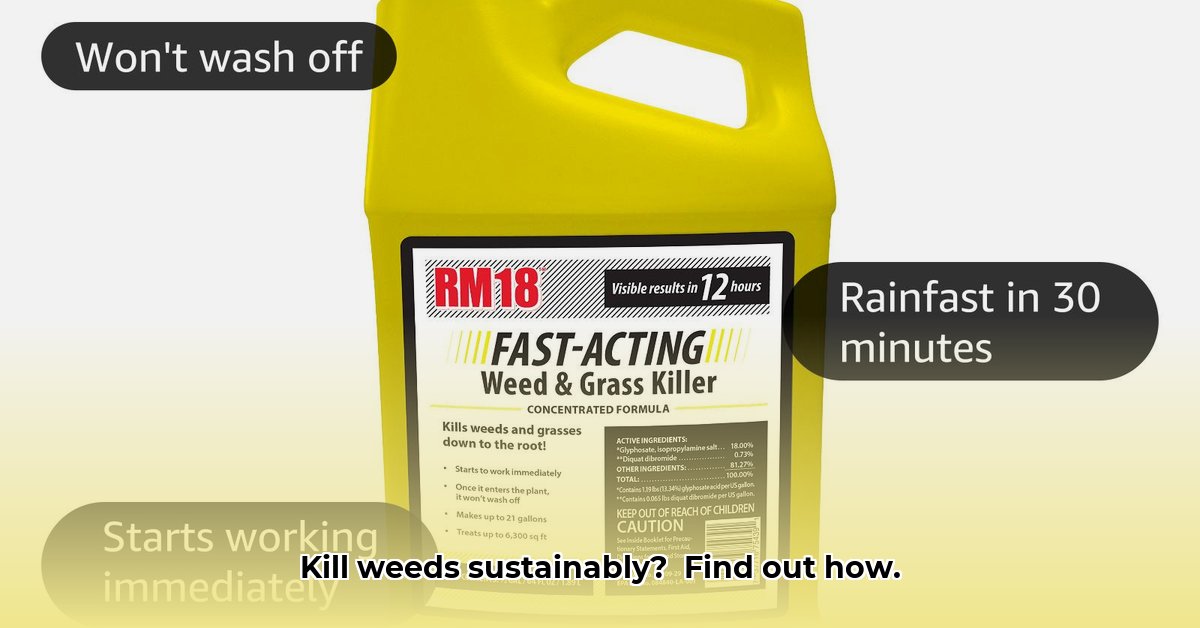
For years, farmers have relied on chemical herbicides like Remedy, readily available at Tractor Supply, for weed control. While effective, this approach has significant drawbacks: high costs (around $130 per gallon!), the development of herbicide-resistant weeds, and environmental concerns. This guide explores sustainable alternatives, offering actionable steps for farmers and industry stakeholders to transition towards a greener future. For more information on herbicide alternatives available at Tractor Supply, check out this resource.
Understanding the Current Situation: The Limitations of Chemical Herbicides
The dominance of chemical herbicides like Remedy reflects their effectiveness in quickly eliminating weeds. However, this reliance creates a cycle of escalating problems. The high cost of repeated applications, coupled with the emergence of herbicide-resistant weeds and growing environmental concerns, necessitates a shift towards more sustainable approaches. The environmental impact, including harm to beneficial soil organisms and broader ecological consequences, cannot be ignored. Increasing regulations further underscore the need for change. Sustainable weed management is no longer optional; it’s essential for the long-term health of our farms and the planet.
Sustainable Alternatives: A Greener Approach to Weed Control
Fortunately, effective and more sustainable alternatives are gaining traction. These strategies offer a range of approaches, each with its pros and cons:
1. Biological Controls: Harnessing Nature's Power
Biological controls utilize natural predators or pathogens to target specific weeds. Think of it as deploying a specialized, natural army against unwanted plants. This method offers environmentally friendly and potentially cost-effective long-term weed control. However, effectiveness varies depending on factors like weather and the specific weed species. Careful planning and monitoring are crucial.
2. Mechanical Weeding: Precision and Technology
Mechanical weeding involves using tools and technology to physically remove weeds. Traditional methods like hand weeding or cultivation are labor-intensive, while advanced technologies like robotic weeders offer greater precision and efficiency, albeit at a higher initial investment. The choice depends on farm size and resources.
3. Integrated Pest Management (IPM): A Holistic Strategy
IPM combines multiple techniques – such as crop rotation, mechanical weeding, biological controls, and targeted herbicide use (only when absolutely necessary) – for a comprehensive and sustainable approach. This holistic strategy minimizes environmental impact and maximizes long-term cost-effectiveness. However, it requires expertise, careful planning, and consistent monitoring.
Actionable Steps for Farmers: A Practical Guide to Sustainable Weed Control
Transitioning to sustainable weed control involves a phased approach:
1. Comprehensive Farm Assessment: Begin by identifying your specific weed issues, available resources (labor, equipment, budget), and crop types. This forms the basis of your personalized plan.
2. Implementing IPM: Start with one or two sustainable methods, gradually integrating others as you gain experience and assess their effectiveness. Monitoring is key to adapting your approach based on results.
3. Sourcing Sustainable Resources: Research and identify suppliers of beneficial insects or acquire suitable mechanical weeding equipment. Consider leasing equipment for initial trials.
4. Cost-Benefit Analysis: Carefully evaluate the short-term and long-term costs and benefits of each method. Factor in not only equipment and labor costs but also potential increases in crop yields and reduced environmental impact.
Actionable Steps for Tractor Supply and AgTech Companies: Fostering a Sustainable Future
Tractor Supply and AgTech companies have a vital role to play in accelerating the adoption of sustainable practices:
Tractor Supply: Expand product offerings to include a broader range of sustainable weed control options. Provide educational resources, workshops, and expert consultation to guide farmers in choosing and implementing these methods.
AgTech Companies: Invest in research and development of innovative technologies such as improved robotic weeders and more effective biological control agents. Make these technologies accessible and affordable for farmers of all sizes.
The Regulatory Landscape: Navigating the Changing Environment
Regulations regarding herbicide use are constantly evolving. Stay informed about local and national guidelines to ensure compliance. The regulatory landscape is shifting towards increased scrutiny of chemical herbicides and greater support for sustainable alternatives.
Conclusion: Embracing a Sustainable Future for Agriculture
The transition to sustainable weed management is more than a trend; it's a necessity. By embracing these alternative methods, farmers can protect their land, their profits, and the future of food production while minimizing environmental impact. Collaboration between farmers, researchers, industry stakeholders, and policymakers is essential to ensure a sustainable and prosperous future for agriculture.